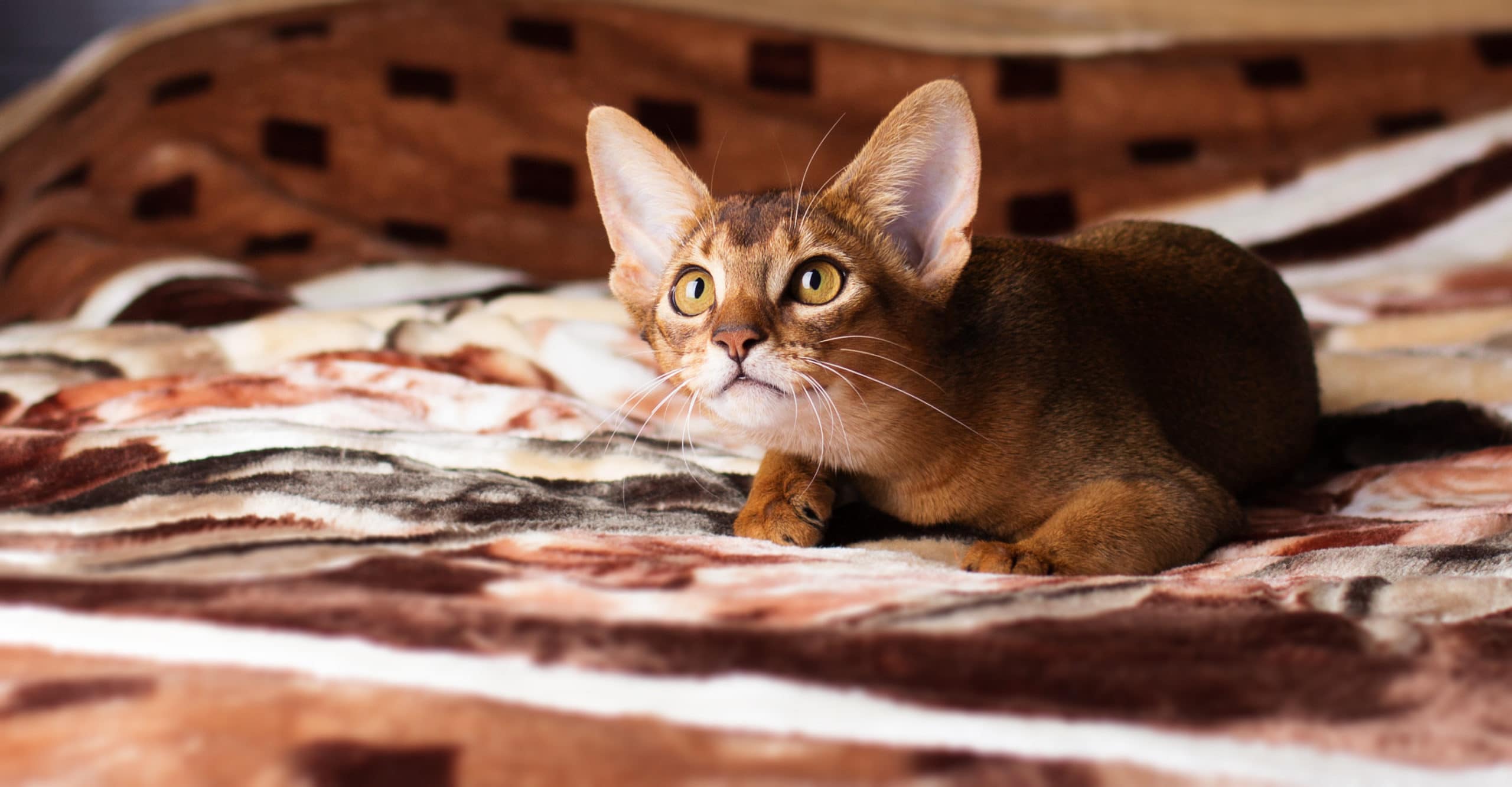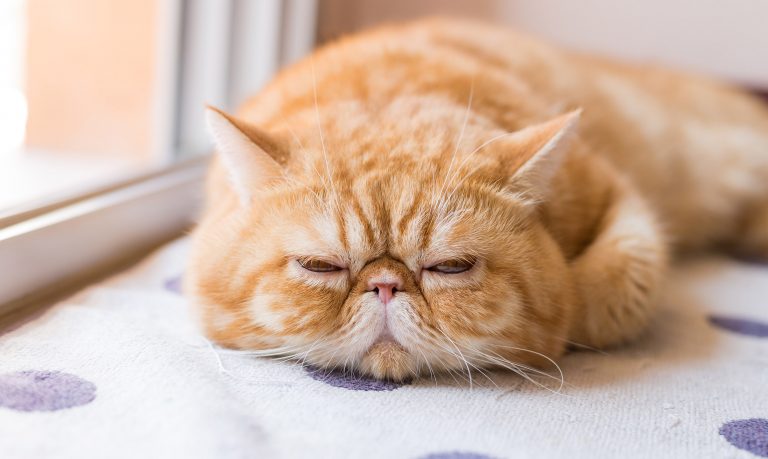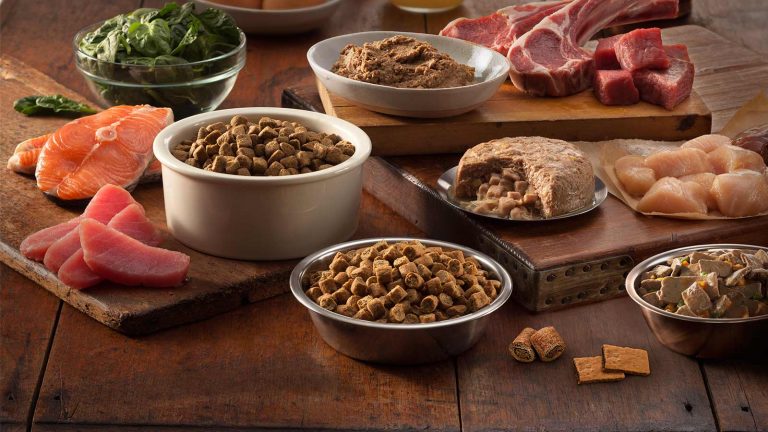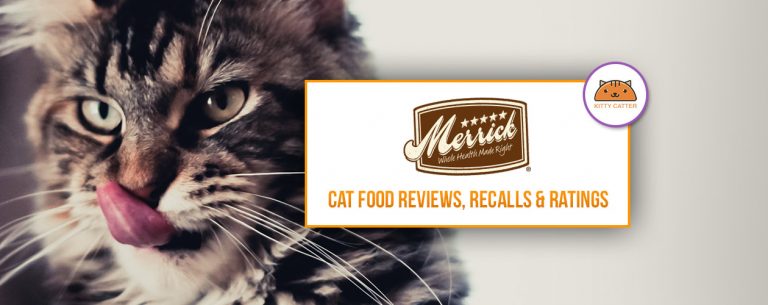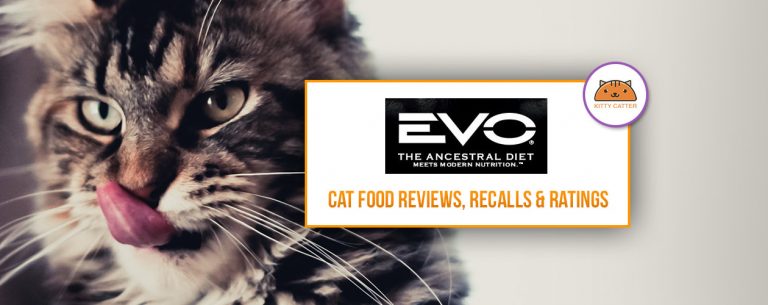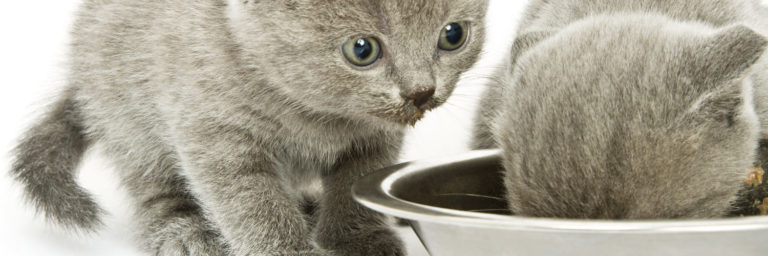Best Cat Food for Abyssinians
Contents of Article
The ancient Abyssinian is an elegant, muscular, medium-sized cat. They are easily recognizable by their solid-colored base coat with the unique “ticking” pattern, usually in a warm reddish-brown shade with dark specks.
The breed bears a strong resemblance to the African wild cat ancestor of all cats and to cats seen in paintings from ancient Egypt. Intelligent, active, and outgoing, Abyssinians love human companionship. If you share your home with an Aby, be prepared for a high wire act – this breed is known for climbing and jumping. They love heights.
Abyssinians are one of the most popular breeds in the United States today.
What is the Best Cat Food for an Abyssinian?
- JustCats Fish & Chicken
- NomNomNow Chicken Chow Meow
- Wellness Complete Health (canned) Turkey& Salmon Recipe
- Natural Balance Ultra Premium Ocean Fish Formula Canned Cat Food
- Orijen Regional Red (dry) Cat Food
- Instinct Grain Free Ultimate Protein Kibble For Cats Chicken Formula
- Wellness CORE Grain-Free Chicken, Turkey & Chicken Liver Formula Canned Kitten & Cat Food
Diet & Nutrition
There are several important points to know about your cat’s diet and nutrition, regardless of breed. Their digestive system is shorter than that of a dog’s, for one thing. This means that food passes through their gastrointestinal system faster. Food usually passes through your cat’s system in 12-24 hours.
Cats don’t break down some nutrients as completely as dogs (or humans) do. This means that they need some of their nutrients in a different form so they can absorb them. For example, your cat needs arachidonic acid in his food, an essential fatty acid. Dogs can make this fatty acid from linoleic acid or gamma-linolenic acid but cats can’t. Cats need an active form of Vitamin A because they don’t have the enzyme to break down beta-carotene (found in many plants) into retinol (Vitamin A) the way dogs can. Dogs can also make some taurine in their own bodies, but cats can’t produce much of this amino acid in their bodies. It has to be added to their food. They need a lot of taurine for the proper functioning of the heart muscle, eye health, and good bile formation. Without enough taurine in their diet, cats can develop a variety of serious health problems. Likewise, cats are not able to synthesize much niacin (a B Vitamin) in their bodies, so this also has to be added to their diet.
You have probably heard that cats are “obligate carnivores” and this is true. Your cat has 30 teeth and they are all sharp, designed for cutting and tearing. They do not have grinding molars for crushing plant material. While most dogs thrive on a diet that contains a lot of meat protein, they have digestive enzymes that allow them to break down starches, too. Dogs have been domesticated much longer than cats, however, and shared an agricultural diet with humans that included grains. Cats, by contrast, must have meat protein in their diet. They do not have salivary amylase and they can’t pre-digest carbohydrates. According to veterinarians and researchers, cats can digest cooked starches but there can be some drawbacks to feeding a cat a diet that is high in carbohydrates. Some cats do not digest carbohydrates easily and they may need a diet that is low in carbohydrates or a food that has natural enzymes to help them digest the starches found in many cat foods today, especially commercial dry foods. In some cases, excessive carbohydrates are implicated when cats become obese, which can lead to other health problems such as diabetes mellitus.
Your cat also requires a much higher percentage of protein in his diet than a dog does. While the recommended minimum protein percentage for an adult dog is just 18 percent, the recommended minimum for an adult cat is 26 percent. This is the minimum. Most people prefer to feed a cat food that has a much higher protein percentage.
The NRC (National Research Council of the National Academies), which provides nutritional data based on the Nutrient Requirements of Dogs and Cats for the U.S. Food and Drug Administration, makes these protein recommendations for cats:
DAILY RECOMMENDED ALLOWANCES FOR PROTEIN AND FATS
KITTENS ADULT CAT NURSING CATS
Weighing 1.8 lb Weighing 9 lb, Weighing 9 lb with 4 consuming 250 Calories
Crude Protein 10 g 12.5 g 41 g
Total Fat 4 g 5.5 g 12 g
Determining Grams of Essential Nutrients from Petfood Labels
Petfood labels do not generally list amounts of essential nutrients in grams. However, all pet food labels must state guarantees for the minimum percentages of crude* protein and crude fat, and the maximum percentages of crude fiber and moisture. To convert these percentages to grams, simply multiply the crude per- centages times the weight of your cat’s daily portion. For example, if you feed your cat one 6-oz (170-gram) can of food per day, and the food contains 8% crude protein, the grams of protein would be 0.08 x 170 =13.6 grams.
*”Crude” refers to the specific method of testing the product, not to the quality of the nutrient itself.
The NRC makes the following recommendations for a cat’s daily calorie needs:
AVERAGE DAILY ENERGY NEEDS
CALORIES PER DAY
(Kilocalories per day*)
5 lb 10 lb 15 lb 20 lb
Kittens (after weaning) 200 — — —
Lean Domestic Cat 170 280 360 440
Overweight Domestic Cats 180 240 280 310
Exotic (wild) Cats 100–480 170–810 230–1,100 200–1,360
Pregnant/Nursing Cat
(4 kittens / 4 kittens at 336 603 851 1,091
peak lactation)
*1 Calorie =1 kilocalorie =1,000 calories. The term Calorie that is used on food nutrition labels
is really a “food calorie” sometimes called a “large calorie.” It is equivalent to 1,000 calories
(or 1 kilocalorie) as calories are defined scientifically (the amount of energy needed to warm
1 gram of water 1°C).
In Nutrient Requirements of Cats and Dogs, energy needs are expressed
in terms of kilocalories, which are equivalent to Calories in this document.
Not all foods currently list calories on the label but you can usually find them listed on a company’s web site, along with other nutritional information and the AAFCO nutritional adequacy statement for the food.
You can find more nutritional information in the pamphlet “Your Cat’s Nutritional Needs,” published by the National Research Council. This 16-page pamphlet is easy to download and read.
As with other pet food, you should look for cat food that is AAFCO- (Association of American Feed Control Officials) approved. AAFCO is a voluntary membership association of local, state and federal agencies charged by law to regulate the sale and distribution of animal feeds and animal drug remedies. While AAFCO is not perfect, at least it provides some minimum standards for pet foods and labeling.
As far as specific things to look for in a good cat food, here are some things you should look for:
- Named meats
- Avoid artificial colors, flavors, and preservatives
- Low carbs
Meat protein is very important for all cats. For this reason we do not automatically discount some cat foods that use meat by-products, especially if they are low in carbohydrates. This is different from the way dog foods are usually evaluated. With dog foods, meat by-products are often considered a lower quality ingredient. However, cats have such a need for meat protein that many experts are willing to overlook this fact in order for cats to get the meat protein they need in their diet.
Many cat owners today prefer wet (canned or similar) foods over dry foods. Cats often have urinary tract diseases which are worsened by dry foods and not drinking enough water. Wet/canned foods provide much more moisture in the cat’s diet. However, there are some situations where you might prefer to feed a dry cat food or it fits better with your lifestyle. In these situations, make sure that you are providing your cat with plenty of fresh water. It’s often a good idea to provide an automatic waterer, especially the fountain type, since the running water seems to encourage cats to drink more water.
Common Health Problems Related To Food
Cats are subject to several diet-related health problems. Assuming you are feeding a food that is nutritionally balanced, your cat can still develop some serious health issues.
Obesity is one of the health problems most frequently seen in cats today, especially as they get older. Many middle-aged cats today (often between 5-10 years of age) gain weight, have excess body fat, and get very little exercise. This is especially true for spayed/neutered cats and indoor cats – which makes up the majority of pet cats in the U.S. today. Cats simply eat more food than they can use up with their energy requirements. This can be caused by overfeeding, by leaving down food for free feeding at all times, by feeding high-calorie foods, and by giving high-calorie treats, along with lack of exercise.
There can be other causes of obesity such as hypothyroidism, insulinoma, or hyperadrenocorticism, but in most cases cats become obese because they are eating more calories than they can use. Cats that are obese should be encouraged to lose weight. A weight loss diet for cats typically relies on higher protein and fiber with lower fat.
Obesity can lead to serious health problems for cats so this condition should be addressed. It can reduce your cat’s lifespan, affect his bones and joints, digestive organs, and his ability to breathe properly.
Obesity in cats can also lead to diabetes mellitus. Symptoms of this form of diabetes in cats include: constant hunger, weight loss, increased urination, and increased consumption of water. It can affect any cat but it is most common in older, obese cats. Male cats are more susceptible than females. Obesity is a major contributing factor. Left untreated, this disease will shorten your cat’s lifespan. It can be treated in several ways, depending on the severity of the condition but there is no cure. Getting your cat’s weight under control usually helps a great deal.
Cats can also develop urine crystals and bladder stones which appear to be related to their diet in some cases. In male cats crystals may plug the urethra, which can become a life-threatening condition because it prevents the cat from urinating. In other cats, stones develop somewhere along the urinary tract (kidneys, bladder, urethra, etc.). Stones can also cause an obstruction and prevent the cat from urinating. Some cats may strain and pass blood when trying to urinate. The crystals and stones are formed by minerals in the cat’s urine. The cat’s diet is believed to play a role in the development of the crystals and stones since they are more likely to develop in urine that is alkaline.
Struvite crystals are made up of magnesium, ammonium, and phosphate. The crystals and stones are more likely to develop in alkaline urine. The main dietary factors which appear to affect the development of struvite crystals are urine ph and water consumption. In the past, crystals and stones made of struvite were more common in cats. As a result, diets were developed to minimize the risk of forming struvite. These diets were low in magnesium and cats eating them produced an acidic (low pH) urine. As more cats were fed these diets, both for treatment and prevention of struvite, the percentage of cats with struvite stones decreased, but the incidence of calcium oxalate crystals and stones increased. Struvite is still, by far, the most common component of urethral plugs.
If you suspect your cat is at risk of forming crystals or stones, there are special diets available so you can change the pH of the food you are feeding. One thing that all cat owners can do to help prevent the formation of crystals and stones is to make sure their cat is drinking plenty of water. Drinking more water keeps urine less concentrated. It encourages your cat to pee more often so the urine will stay in the urinary tract for shorter periods of time, meaning there is less chance of crystals collecting.
Feeding
Abyssinian Eating Habits
It’s important to always have fresh, clean water available for you Abyssinian.
You can typically feed an Abyssinian kitten that is three-months-old three small meals per day. This can be reduced to two meals per day by the time the kitten is six months of age but you should be increasing the amount of food. Remove any food that is not eaten after about 10 minutes. This is particularly true with wet/canned food. Any food left sitting in the floor will soon go rancid.
Overfeeding and free feeding, in general, can lead to obesity in cats but according to several sources, the Abyssinian is such an active breed that they probably burn off extra calories. So, if you need to leave dry food sitting out, you can probably do it with Abys, at least while they are young cats.
Abyssinians are prone to gingivitis so pay attention to your cat’s teeth. Although some people believe that feeding a crunchy dry food helps prevent teeth problems, there is not much evidence to support this idea. Instead, look for some products to keep your cat’s teeth and gums healthy.
Automated vs Slow vs Traditional Bowls/Feeders
No matter how devoted you are to your cat, there will probably be times when you can’t be home to feed a meal as scheduled. Most cats like to have their food served promptly, so this can present a problem. That’s when an automated feeder can be very helpful.
Automated feeders are usually easy to use. They work on a timer and you fill them with the dry food you plan to feed your cat. At the appropriate time, the feeder dispenses the food. Automated feeders vary from feeders that deliver 1-2 meals to those that deliver several meals over the course of several days. As far as we know, there are no automated feeders that dispense wet/canned foods. This PetSafe Healthy Pet Food Station holds two pounds of food, delivers it into a vet-recommended stainless steel bowl, and it’s dishwasher-safe. $17.49 at Chewy.com.
A slow feed bowl allows you to feed your cat by adding the food to the bowl. But then it makes it somewhat difficult for your cat to reach the food. The cat has to work to get the dry food out of the bowl. This kind of bowl can be helpful for overweight cats since it makes a cat eat more slowly. It can be a good way to control your cat’s portions. This Pioneer Pet Ceramic Portion Control Food Dish will slow your cat down while he fishes out his kibble. $21.99 at Chewy.com.
You are probably already familiar with traditional feed bowls. They come in plastic, stainless steel, and ceramic. We do not recommend the plastic bowls since they scratch easily and harbor germs. Stainless steel is a good choice. It is easy to clean. It is usually dishwasher safe. It does not harbor germs. And stainless steel bowls come in many styles today, including some that are very attractive. Stainless steel doesn’t have to be plain. This bowl from Loving Pets has an antique gold exterior with fleur de lis. The interior is stainless steel. It has a removable rubber base so it won’t skid and it’s quiet. It’s also dishwasher-safe.
Ceramic bowls are often very attractive, too, such as stoneware or crockware. Ceramic bowls that have been fire-glazed do not harbor germs. You should choose one that is dishwasher-safe. Ceramic bowls are usually sturdy but you should be aware that they can crack if you drop them. Once they crack they are no longer good to use since bacteria will grow in the crevices. This PetRageous Designs stoneware bowl is a cute choice for any cat. Handcrafted, oven-fired, dishwasher and microwave-safe.
Best Cat Food For Abyssinians
Research shows that adult cats need a minimum of 26 percent protein in their diet (dry matter basis). Many good quality cat foods will have a much higher percentage of protein. In the wild or living as a feral, a cat would eat 50-60 percent protein in their diet and around 25 percent fat, from catching live food. You can find both wet and dry cat foods with percentages that approach these figures. As always, it’s important to make sure that your cat is drinking plenty of water.
Here are some foods that we recommend for adult Abyssinians.
JustCats Fish & Chicken
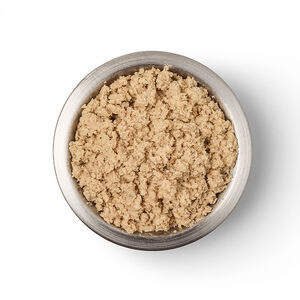
JustCats Fish & Chicken recipe is low in carbohydrates and high in protein and it’s perfect for adult cats of all breeds. This nutritionally balanced cat food contains yuca root to absorb and retain moisture, to help ensure your cat is always fully hydrated. Yuca root is also highly digestible, something that is very important for cats with pancreatitis. It is made with human-grade ingredients and the main source of protein is Alaskan Pacific wild-caught cod. Cod is low-calorie and a good source of omega-3 fatty acids, niacin, vitamin B12 & B6, potassium, phosphorus, and selenium. It has no growth hormones, grains, or gluten, and it’s highly digestible. Cat food that contains easily digestible EFAs, like those in fish, helps contribute to a healthy, shiny coat. If you choose this food for your cat, you can have peace of mind knowing that it is formulated to meet the nutritional levels established by the AAFCO Cat Food Nutrient Profiles for maintenance.
Pros: Gluten free, grain-free, ideal for adult cats, hydrating, highly digestible, human grade
Cons: More expensive than other cat foods
NomNomNow Chicken Chow Meow
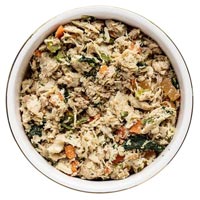
The first five ingredients in this food are: Chicken thigh, chicken breast, chicken liver, carrots, asparagus. NomNomNow foods are made fully grain-free, with human grade, restaurant-quality ingredients and in human food processing facilities in California and Tennessee. When you order NomNomNow cat food, you’ll create a profile with your cat’s health, weight, and weight goals. The NomNomNow staff prepares small batches of fresh food and portions it out according to your cat’s calorie needs. They ship a week’s or month’s supply in a refrigerated box. NomNomNow’s Chicken Chow Meow is made with flaked chicken mixed with a blend of low-glycemic veggies and NomNomNutrient mix for nutritional completeness. The food is rich in animal-sourced protein with low carbohydrate content. It’s a species-appropriate choice for any cat.
Wellness Complete Health (canned) Turkey& Salmon Recipe
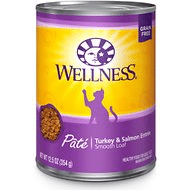
The first five ingredients in this canned food are: Turkey, Chicken Liver, Whitefish, Chicken Broth, and Salmon. By dry matter basis, this food has Protein 45.45 percent, Fat 27.3 percent, Fiber 4.5 percent, Carbs 14.5 percent, and 33 kcal per ounce. It features two good sources of meat protein and essential fatty acids. It also has chelated minerals so your cat can absorb them more easily. And it has low magnesium for better urinary tract health. Comes in 12.5 oz., 5.5 oz. and 3 oz. cans.
Natural Balance Ultra Premium Ocean Fish Formula Canned Cat Food
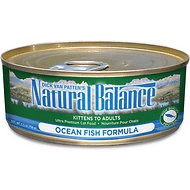
We like this all life stage cat food from Natural Balance. Some people don’t like to feed cat food using fish to cats because cats can become addicted to it but we think it’s okay to feed in rotation with other recipes. Other people worry about mercury levels and other toxins but, again, we think it’s okay to feed fish in rotation with other foods. (There are drawbacks to many foods if you look closely enough.) If you really wish to avoid feeding fish, Natural Balance has many similar products made with other ingredients.
The first five ingredients in this food are: Ocean Fish, Fish Broth, Turkey, Chicken Liver, and Tuna. By dry matter basis the food has Protein 41 percent, Fat 22.7 percent, Fiber 4.5 percent, Carbs 22.7 percent, and 32 kcal per ounce. This food has no artificial colors, flavors, or preservatives.
Weruva and Tiki Cat are two other brands of wet/canned foods that we really like.
If you are looking for good dry foods, there are some that we like. Again, it is especially important to make sure that our cat is drinking plenty of water if you are feeding a dry cat food.
Orijen Regional Red (dry) Cat Food
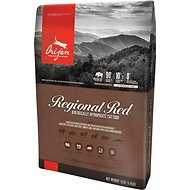
Orijen has an excellent reputation, whether you are considering dog or cat food. Their Regional Red cat food is made with 90 percent meat and fish ingredients; and 10 percent vegetables, fruits, and botanicals. The first five ingredients in this food are: Deboned beef, deboned wild boar, deboned goat , deboned lamb, and lamb liver. By dry matter basis the food has Protein 44.4 percent, Fat 22.2 percent, Fiber 3.33 percent, Carbs 20 percent, and 115 kcal per ounce. Two-thirds of the meat in this food is fresh (refrigerated, without preservatives) or raw (flash-frozen, without preservatives), including the top 10 meat ingredients. Although this is a dry cat food, it uses whole prey ratios of meat, organ meats, and edible bones.
Instinct Grain Free Ultimate Protein Kibble For Cats Chicken Formula
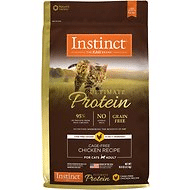
This ultimate protein kibble is made only with real chicken and no rendered meats, chicken meal, or by-product meal. It has up to three times more real chicken than most dry pet food. The food has probiotics for digestive health, omega fatty acids for healthy skin and coat, antioxidants for a healthy immune system, and the food has a freeze dried coating for better nutrition and taste.
On a dry matter basis this food has Protein 52.2 percent, Fat 18.9 percent, Fiber 3.33 percent, Carbs 17.8 percent, and 108.3 kcal per ounce. The first five ingredients in this food are: Chicken, Tapioca, Ground Flaxseed, Chicken Fat (preserved with Mixed Tocopherols and Citric Acid), and Natural Flavor.
Best Kitten Food For Abyssinians
Food for kittens should have an AAFCO nutritional adequacy statement that says the food is appropriate for growth/reproduction. All life stage foods can also be fed to kittens since these foods have been approved for cats at all stages of growth and maintenance. Kittens have different nutritional needs than adult cats on a maintenance diet. For example, kittens need a minimum of 30 percent protein for growth, while adult cats need a minimum of 26 percent. Kittens need more calcium while they are growing, and so on. So, look for foods that are especially made for kittens or for all life stage foods.
Here are a couple of foods we like for Abyssinian kittens.
Wellness CORE Grain-Free Chicken, Turkey & Chicken Liver Formula Canned Kitten & Cat Food
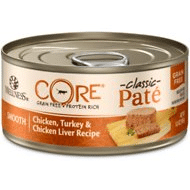
This food is high in protein and grain free. No corn, wheat, or soy. The first five ingredients are: Chicken, Turkey, Chicken Broth, Chicken Liver, and Chicken Meal. The guaranteed analysis shows: Crude Protein (Min) 12.00 percent, Crude Fat (Min) 7.00 percent, Crude Fiber (Max) 0.50 percent, Moisture (Max) 78.00 percent, Ash (Min) 2.10 percent, Magnesium (Min) 0.028 percent, and Taurine (Min)0.10 percent. A 5.5 ounce can contains 218 calories.
If you prefer a dry food for your kitten, we suggest the bestselling Orijen Cat & Kitten Grain-Free Dry Cat Food or Acana Meadowland Regional Formula Grain-Free Dry Cat & Kitten Food.
Acana is made by the same company that makes Orijen (Champion Pets) but it has slightly less meat protein and it costs a little less. This Acana Meadowland formula is made in Champion’s new facility in Kentucky. It features free-run chicken and turkey, whole nest-laid eggs, freshwater fish and whole vegetables and fruits from local farms. It is made with 75 percent meat and has 25 percent carbs. The first five ingredients are: Deboned chicken, deboned turkey, chicken giblets (liver, heart, kidney), chicken meal, and catfish meal. The guaranteed analysis shows: crude protein 35 percent, crude fat 20 percent, moisture 10 percent, crude fiber 4 percent. If you choose to feed a dry food, these are good quality foods.
Best Cat Food For Senior Abyssinians
Senior cats tend to be different from, senior dogs. Most mature cats have decreasing energy needs until they are about 11 years of age the they start increasing again as the cat grows older. Middle-aged cats often have problems with obesity but cats can start to lose weight as they become seniors. As they age, cats may not digest or absorb protein and fat as well as younger cats. They often need food that is easy to digest so they can get the energy they need. As your cat gets older, it’s important to monitor his weight and condition so you can adjust his diet. There is no need to restrict the amount of protein your older cat eats unless he has a specific health issue and your veterinarian recommends a change in his diet.
One of the foods we recommend for older cats is Precise Naturals® Senior Formula. The first five ingredients in this food are Chicken, Chicken Broth, Chicken Liver, Oat Bran, and Ground Brown Rice. The guaranteed analysis shows: Crude Protein 9.00 percent (min); Crude Fat 4.50 percent (min); Crude Fiber 0.75 percent (max); Moisture 78.00 percent (max); and Ash 2.10 percent (max). This food has 181 Kcal per 5.5 oz can. These are easy-to-digest, tasty ingredients in a canned food that most senior cats should enjoy from a company that does a good job making specialized diets for dogs and cats.
Best Cat Food For Abyssinians With Food Allergies/Intolerances
As with any animals, Abyssinians can sometimes have food allergies or food intolerances. If your cat has a sensitive stomach or a skin irritation due to a food intolerance, here are some foods we recommend.
Sensitive Stomach
If your cat has a sensitive stomach he may vomit or have diarrhea. He may gag. He may refuse his food or not eat from time to time. As someone who loves your cat, you know how distressing this can be. You may want to take your cat to the vet to make sure there is nothing wrong. If the problem is a sensitive stomach, you may need to try different foods to find out what your cat can tolerate eating. Sometimes a limited ingredient diet cat food is a good choice, especially if you can identify the particular ingredient(s) which bother your cat and avoid them. Wet/canned foods usually have fewer ingredients than dry foods so it’s probably easier to avoid certain ingredients if you feed a canned food.
Natural Balance makes quite a few limited ingredient foods but we also like Nature’s Variety Instinct Limited Ingredient Turkey Formula (and their other limited ingredient formulas). This food has a single source of animal protein. The ingredients are easy to digest. It’s grain free and gluten-free. No chicken, beef, eggs, or dairy. It’s an all life stage formula suitable for all breeds. And it’s good for feeding in rotation with other formulas. The first five ingredients are: Turkey, Turkey Broth, Turkey Liver, Peas, and Montmorillonite Clay. The food has 212 calories per 5.5 ounce can. The guaranteed analysis shows: Crude Protein (min): 10.5 percent, Crude Fat (min): 7.5 percent, Crude Fiber (max): 2.0 percent, and Moisture (max): 75.0 percent.
Skin Irritation
Cats can sometimes develop skin irritations due to food allergies. The allergy can make them itch, which leads to scratching, which makes the skin raw. Next thing you know, you have irritated skin which can even get infected. If your cat does have this kind of skin allergy, it’s a good idea to see your veterinarian. You may need to work through food trials and an elimination diet to identify the ingredients that your cat is allergic to.
If you think you know the cause of your cat’s food allergy, you can try to find foods that don’t contain that ingredient. Again, we recommend a limited ingredient diet. Foods with fewer ingredients are less likely to contain the offending ingredient and it’s easier for you to control what your cat is eating. If you do need to use an elimination diet, there are prescription diets. You just need a prescription from your veterinarian and you can order the food online.
For a limited ingredient diet you can try one of the foods from Natural Balance such as L.I.D. Limited Ingredient Diets® Duck & Green Pea Canned Cat Formula. This food has limited protein and carb sources. It’s grain free with alternative ingredients so it’s less likely to trigger your cat’s food allergy. It’s an all life stage formula so it can be fed to cats of all ages. No artificial colors, flavors, or preservatives. The guaranteed analysis shows: 9 percent crude protein, 7 percent crude fat, 2 percent crude fiber, 78 percent moisture, and 0.05 percent taurine. The first five ingredients in the food are: Duck, Duck Broth, Duck Liver, Pea Protein, and Ground Peas. This is a bestselling food for cats with food allergies.
Conclusion
We hope this look at what to feed your Abyssinian has been helpful. These beautiful cats deserve a healthy diet to keep them active and happy throughout their lives. Whether you are just beginning your life with a crazy kitten or you are choosing a food for a senior Aby, there are many good cat foods available. Look over our suggestions, browse, and consider your cat’s tastes. We wish you all the best.

